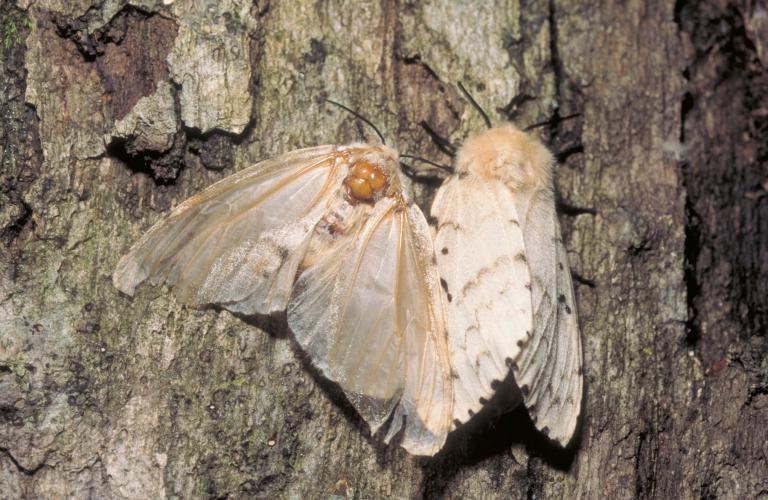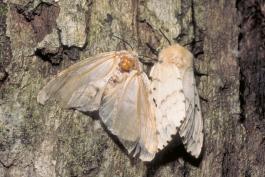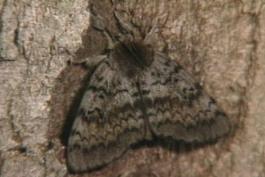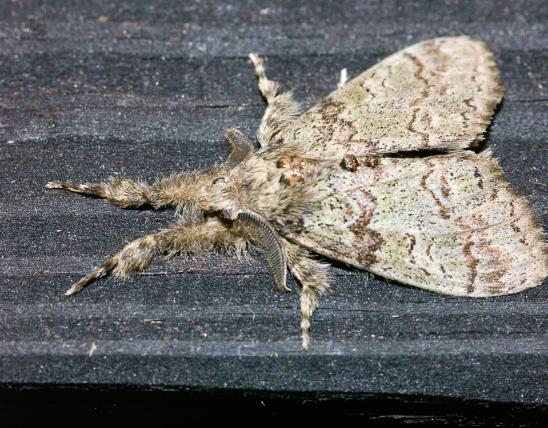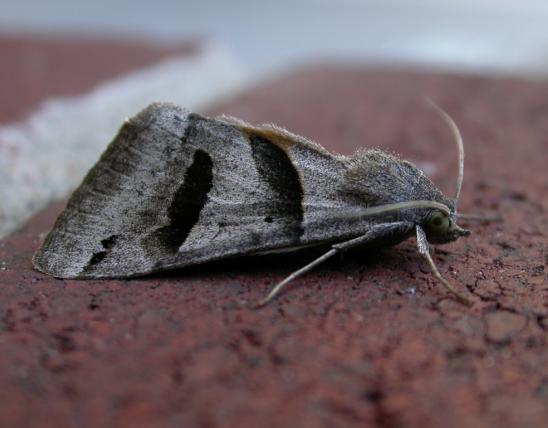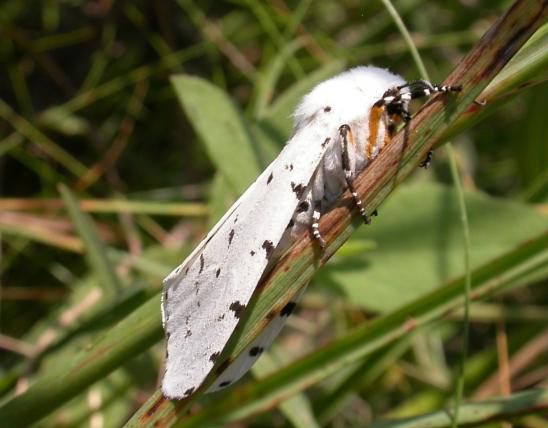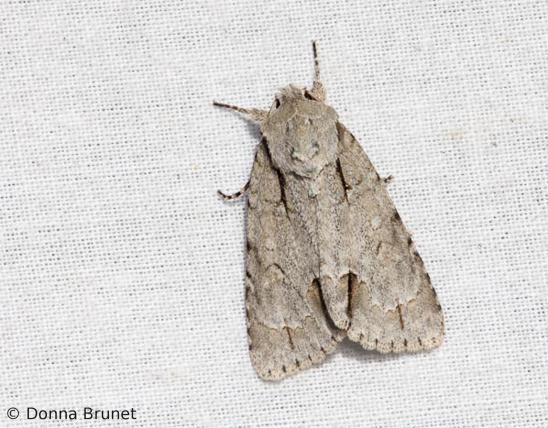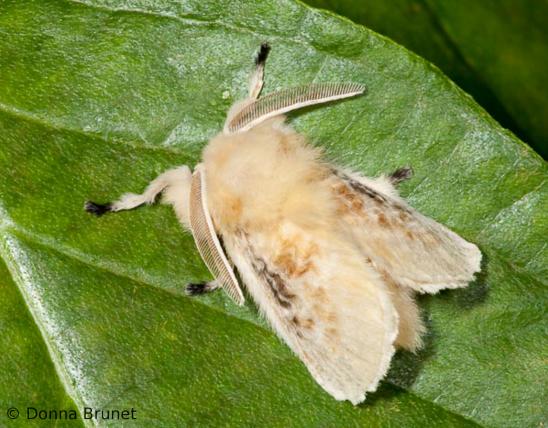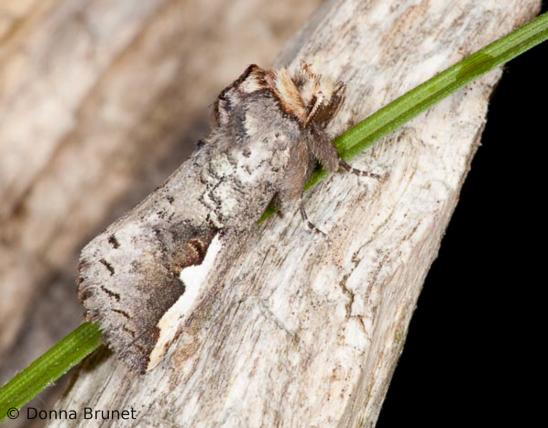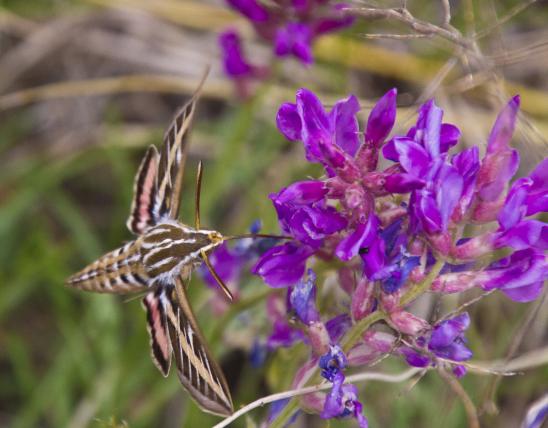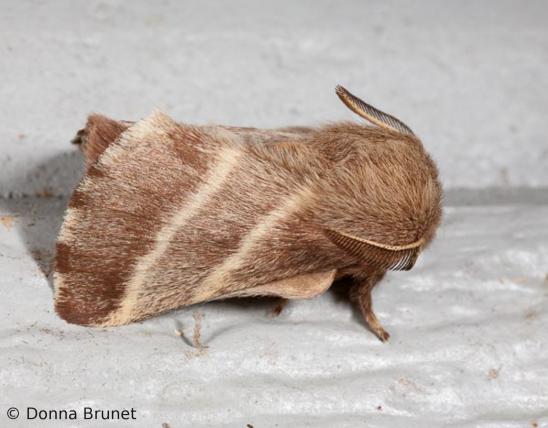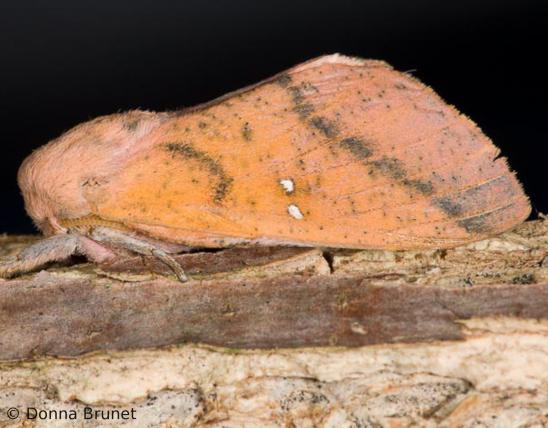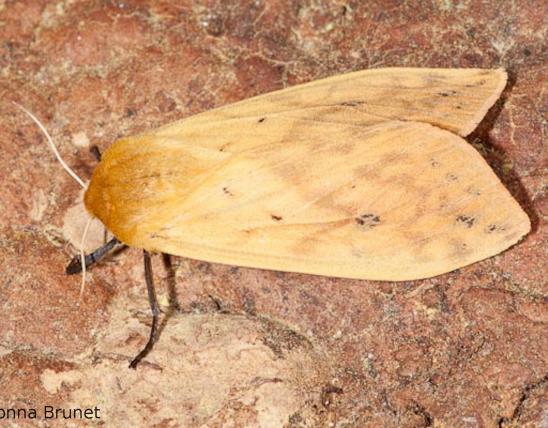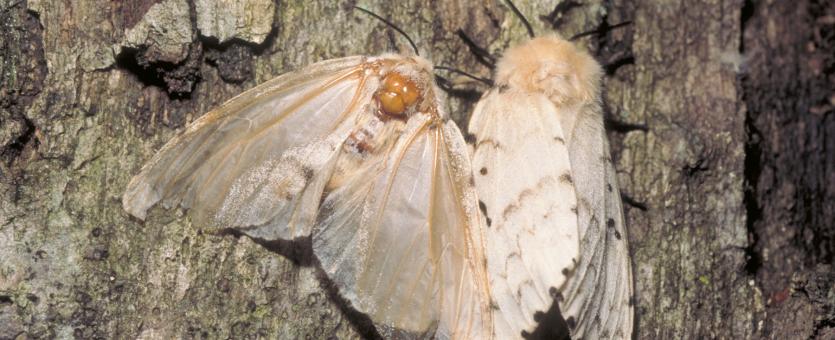
Adult spongy moths vary by sex. Males have regular scalloped lines parallel to the wing edges and are smaller than females. Females are cream-colored with a larger body, with the same scalloped lines on the wing as the male. The species name, dispar, refers to the disparate, or dimorphic (different-looking), genders.
Larvae are grayish brown with yellow lateral lines, conspicuous red and blue warts (5 pairs of blue in front, then 6 pairs of red), and thin, unequal tufts and many long hairs.
Similar species: Two groups of moths could be confused with male spongy moths: Our native tussock moths have erratic diamond patterns on the wings and are smaller. Underwing moths (genus Catocala) have erratic zigzag lines on the wings and are larger.
Wingspan: 1–2½ inches; larvae can grow up to 2 inches long.
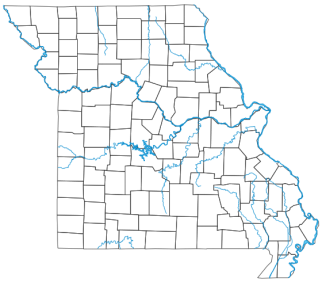
Sporadic occurrences. Hopefully we can keep this species from establishing itself in our state.
Habitat and Conservation
Specimens of this extremely destructive pest species have been found on several occasions in Missouri, but no infestations are known to occur in the state so far. This species was introduced from Europe in the late 1860s, and many eastern states have severe infestations causing millions of dollars in damages to deciduous forests and shade trees. Please learn to recognize this moth and its egg masses and larvae. Watch for and report any occurrences of this extremely destructive pest in our state.
Food
The larvae of this species will defoliate many deciduous trees and even attacks pines. Because the larvae particularly like to eat oak leaves, our Missouri forests, with their abundance of oaks, could be hard hit. Some biologists estimate that the spongy moth will hit our state by 2030, but we want to hold it off as long as possible.
Status
Extremely destructive, invasive, nonnative species.
Life Cycle
Egg masses are about an inch long, buff- or cream-colored, fuzzy, and are often "plastered" onto trees, rocks, and other objects, looking like a gum wad under a chair. The common name is in reference to the spongy quality of the egg masses. If you travel to an infested state, including the entire northeast to Michigan and Wisconsin, Ohio, and Virginia, as well as Arkansas, check your vehicle and other items for these egg masses and pupae so you don’t spread them. The eggs overwinter, and the hungry larvae hatch out in spring when the trees are budding out.
Human Connections
The spongy moth was brought to America by a man hoping to mate them with silkworms to create a hardier, more productive silk-bearer. When some of his spongy moths escaped, that’s when the trouble began. This sad story teaches us to be extremely careful about moving species from place to place, even when profits beckon.
This moth species used to be named using a word that is now widely recognized as a derogatory term applied to the Romani (Roma) people. In July 2021, the Entomological Society of America therefore removed the common name gypsy moth from this species and announced plans to create a new common name that is “respectful, inclusive, and descriptive of the insect.” The new common name, spongy moth, was announced in March 2022, just in time for people to be on the lookout for the larvae chomping on young leaves.
Ecosystem Connections
From our perspective in North America, it’s hard to think of a way to value this species, but back in Europe and Asia, it has a balanced role in its home ecosystem. In North America, however, its defoliation and killing of trees wrecks entire ecosystems, effecting all the plants, insects, birds, mammals, and others that live there.
Populations of our native saturniid moths (the family that includes the spectacular luna, cecropia, and polyphemus moths) are shrinking as an unanticipated result of fly and wasp parasites intentionally introduced to North America to prey on the invasive spongy moths. People concerned with the devastation caused by spongy moth caterpillars identified insect parasitoids from the spongy moth’s native lands and introduced them to America. Unfortunately, those parasitoids also attack several of our native saturniids, reducing their populations in New England and elsewhere. Meanwhile, those parasitoids have not ended the threat of the spongy moth. The harmful effects that can injure nontarget species are important to consider whenever people combat invasive plants and animals.
